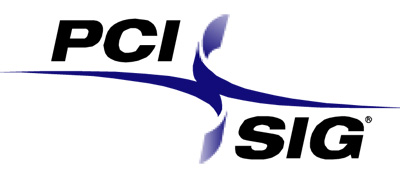AMD's Radeon HD 6990: The New Single Card King
by Ryan Smith on March 8, 2011 12:01 AM EST- Posted in
- AMD
- Radeon HD 6990
- GPUs
PCI-Express Compliance: Does It Even Matter?
For a while now we’ve been under the impression that video card size and power consumption was ultimately capped by the PCI-Express specification. At present time the specification and its addendums specify normal (75W), 150W, 225W, and 300W PCIe card operation. In the case of 300W cards in particular this is achieved through 75W from the PCIe slot, 75W from a 6pin PCIe power connector, and 150W from an 8pin PCIe power connector. As the name implies, the PCIe specification also defines what the 6pin and 8pin power connectors are supposed to be capable of, which is where 75W and 150W come from respectively.
Altogether the biggest, most powerful card configuration in the PCIe specification allows for a 12.283” long, triple-wide card that consumes 300W. To date we’ve never seen a card exceed the physical specifications, but we’ve seen several cards exceed the electrical specifications. This includes cards such as the 5970 and some overclocking-oriented 5870s that were designed to handle more than 300W when overclocked, and even more exotic cards such as the Asus ARES 5870X2 that simply drew more than 300W from the get-go. We have yet to see a reference design from AMD/NVIDIA however that exceeds any part of the PCIe specification by default.

So it has been clear for some time now that cards can exceed the PCIe specifications without incurring the immediately wrath of an army of lawyers, but at the same time this doesn’t establish what the benefits or losses are of being or not being PCIe compliant. To have a reference design exceed the PCIe specifications is certainly a new mark for the GPU industry, so we decided to get right to the bottom of the matter and get an answer to the following question: does PCI-Express compliance matter?
To answer this question we went to two parties. The first of which was of course AMD, whose product is in question. AMD’s answer basically amounts to a polite deflection: it’s an ultra-enthusiast card that at default settings does not exceed the power available by the combination of the PCIe slot and PCIe power connectors. Furthermore, as they correctly note, the 6990 is not the first card to ship at over 300W, as the ARES and other cards were drawing more than 300W a year ago. It’s a polite answer that glosses over the fact that no, the 6990 isn’t technically PCIe compliant.
To get a second opinion on the matter we went straight to the source: The Peripheral Component Interconnect Special Interest Group (PCI-SIG), which is the industry group that defines the PCIe standard and runs the workshops that test for product compliance. The PCI-SIG’s member list is virtually everyone in the computing industry, including AMD, NVIDIA, and Intel, so everyone has some level of representation with the group.

So what does the PCI-SIG think about cards such as the 6990 which exceed the PCIe specification? In a nutshell, they don’t directly care. The group’s working philosophy is closer to approving cards that work than it is about strictly enforcing standards, so their direct interest in the matter is limited. The holy grail of the PCI-SIG is the PCI Express Integrators List, which lists all the motherboards and add-on cards that have passed compliance testing. The principal purpose of the list is to help OEMs and system integrators choose hardware, relying on the list and by extension PCI-SIG testing to confirm that the product meets the PCIe standards, so that they can be sure it will work in their systems.
The Integrators List is more or less exclusively OEM focused, which means it has little significance for niche products such as the 6990 which is split between end-user installation and highly customized OEM builds. The 6990 does not need to be on the list to be sold to its target market. Similarly the 5970 was never submitted/approved for listing, and we wouldn’t expect the 6990 to be submitted either.
It is worth noting however that while the PCI-SIG does have power specifications, they’re not a principal concern of the group and they want to avoid doing anything that would limit product innovation. While the 300W specification was laid out under the belief that a further specification would not be necessary, the PCI-SIG does not even test for power specification compliance under their current compliance testing procedures. Conceivably the 6990 could be submitted and could pass the test, leading to it being labeled PCIe compliant. Of course it’s equally conceivable that the PCI-SIG could start doing power compliance testing if it became an issue…
At the end of the day as the PCI-SIG is a pro-compliance organization as opposed to being a standard-enforcement organization, there’s little to lose for AMD or their partners by not being compliant with the PCIe power specifications. By not having passed compliance testing the only “penalty” for AMD is that they cannot claim the 6990 is PCIe compliant; funny enough they can even use the PCIe logo (we’ve already seen a Sapphire 6990 box with it). So does PCIe compliance matter? For mainstream products PCIe compliance matters for the purposes of getting OEM sales; for everything else including niche products like the 6990, PCIe compliance does not matter.










130 Comments
View All Comments
MarkLuvsCS - Tuesday, March 8, 2011 - link
Thanks for an awesome article!Minor typo in section "ONCE AGAIN THE CARD THEY BEG YOU TO OVERCLOCK" second to last paragraph second sentence says "...the 6690OC’s core clock is only 6% faster and the memory clock is the same, versus..."
Figaro56 - Tuesday, March 8, 2011 - link
Yes this is the article I as waiting for. Time to get rid of my 2 HD 5870 cards and purchase 2 HD 6970 ones. I wouldn't get an HD 6990. That is pretty clear.Thanks AnAndTech!
mino - Tuesday, March 8, 2011 - link
AT has CHOSEN to not overclock the card based on its THEORETHICAL (Furmark) load temperatures ...Go bash AT for writing "OC" on the slides while they enabled ONLY the performance BIOS. Not doing ANY overclocking whatsoever by fear of Furmark ...
In effect what they have done was in effect a factory OC, not a traditional OC of the what-it-can-handle kind.
Great, so Furmark has achieved one more evil goal: it prevents (AT?) journalists to do overclocking reviews ...
mino - Tuesday, March 8, 2011 - link
Here come some real OC numbers: www.legitreviews.com/article/1566/14BTW, they did not even bother with the #1 BIOS option to achieve it ... so, lets talk about biased reviewing, shall we?
RaistlinZ - Tuesday, March 8, 2011 - link
Looks like the 2x6950 is a much better option, given you'll have much less noise to deal with and that they can be flashed to 6970 shaders.If this card had been $599 I probably would have picked one up. But at $699 I think I'll just wait for 28nm generation of cards.
Thanks for trying, AMD.
MarcHFR - Tuesday, March 8, 2011 - link
Hi,Drivers used are :
NVIDIA ForceWare 262.99
NVIDIA ForceWare 266.56 Beta
NVIDIA ForceWare 266.58
AMD Catalyst 10.10e
AMD Catalyst 11.1a Hotfix
AMD Catalyst 11.4 Preview
Is it possible to know wich driver is used for each card ?
Thanks
jcandle - Tuesday, March 8, 2011 - link
Ryan, any chance you'll be doing a thermal compound review soon? 8% against their stock compound. How much better is it than current performance aftermarket compounds?IanCutress - Tuesday, March 8, 2011 - link
Quite difficult to get accurate thermal compound numbers. There's no way you can guarantee that the compound will be spread evenly and accurately every time. Any big 8ºC differences will show sure, but you're always playing with statistics to +/- 3ºC. Then there's the inevitable argument about the right way to apply the paste...7Enigma - Tuesday, March 8, 2011 - link
More importantly is the normal compound most manufacturers use is junk compared to a good thermal compound such as arctic silver (don't keep up on the latest brands as I still have Arctic Silver 3 that works great for me). So that 8% might very well be true since the normal stuff is of poor quality.ypsylon - Tuesday, March 8, 2011 - link
But few issues need to be addressed. Noise for starters, nearly 80dBA. Thats like working in a foundry. Also cooling is highly inefficient for card of this size. Need some 3rd party solution or water cooling altogether.Biggest problem for 6990 could be (or rather will be) nVidia. If they price GTX590 at the same level or even below $700 price tag then AMD will be screwed totally. For now waiting for GTX590 and 6990 with some after market coolers as stock solutions are completely unacceptable.
One thing straight - I do not sleep on ca$h and if I buy 6990/590 it will be ma$$ive expense for me, but... What swings things for me with cards like this, is that I do not need uber VGA for 30 monitors. All I want is card with large frame buffer, which will live in my PC for ~10 years without need to upgrade, and it will occupy only 1 PCI-ex x16 slot. SLI/CF is totally misguided if you do have some more hardware installed inside. Sometimes (with all that SLI/CF popularity) I wonder, why 7 slot ATX is still alive and 10-12 slot motherboards are not a standard?